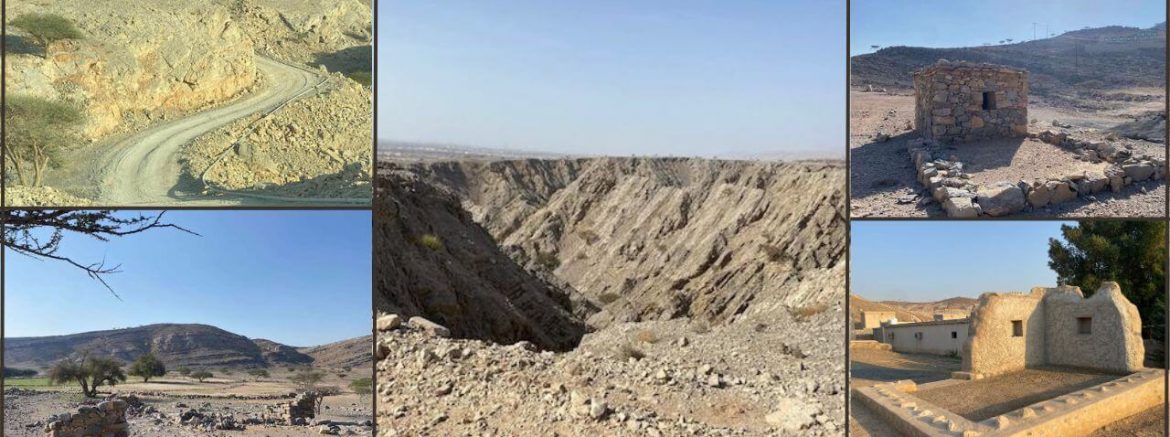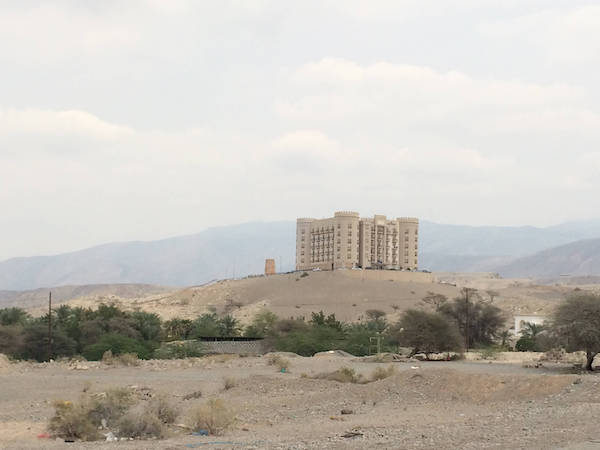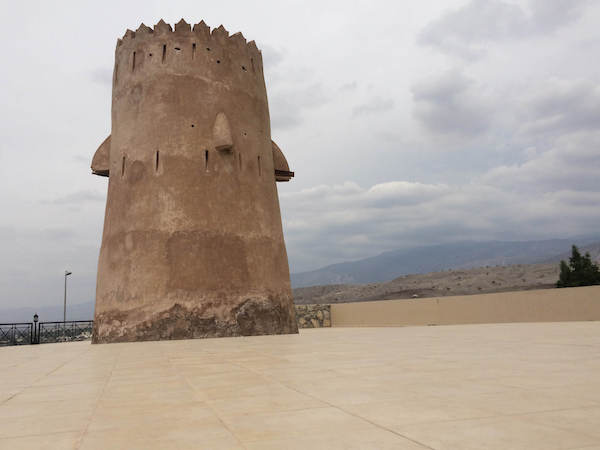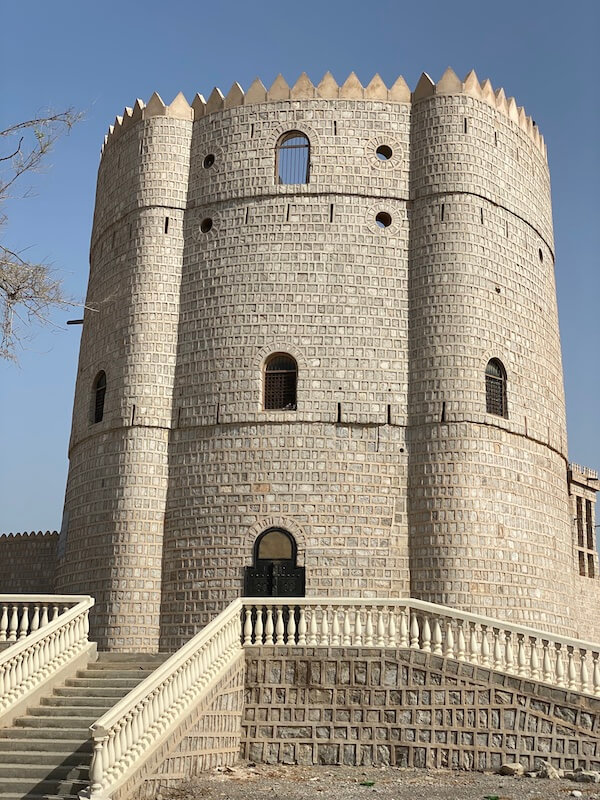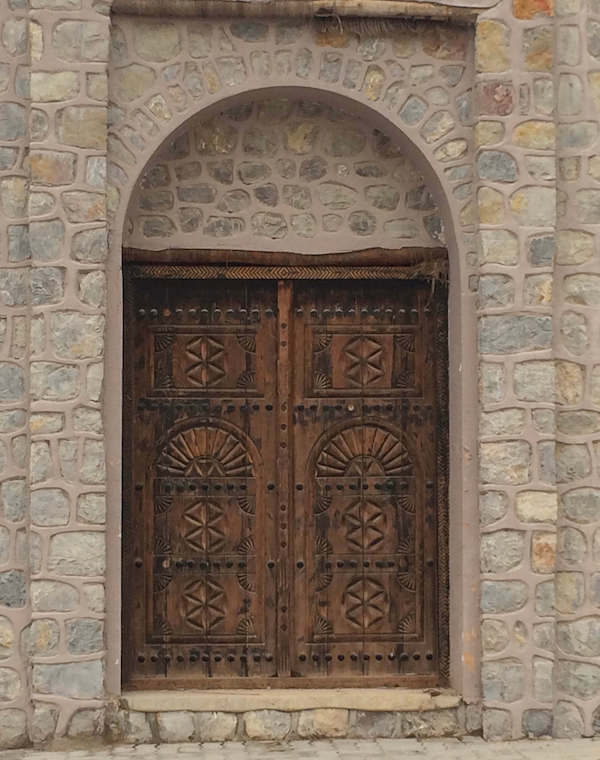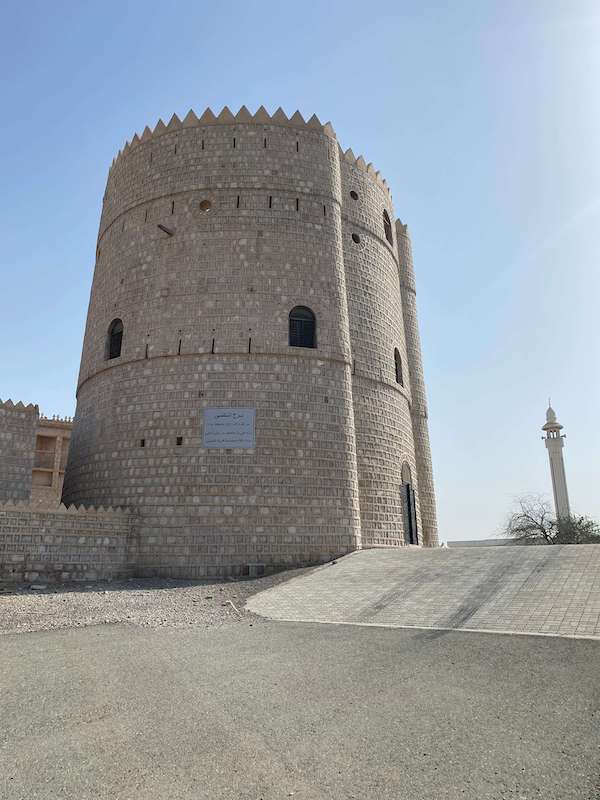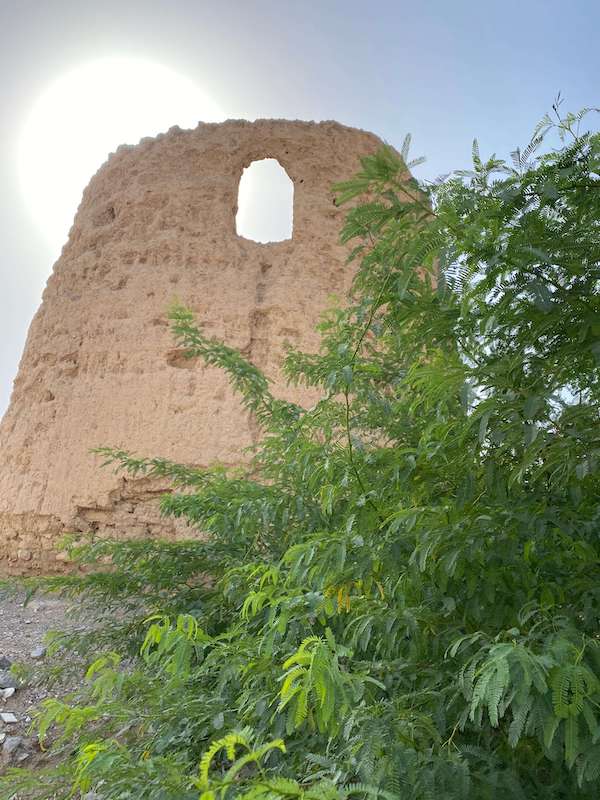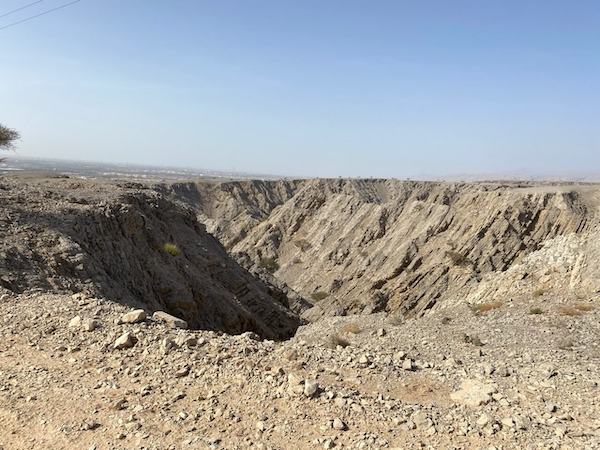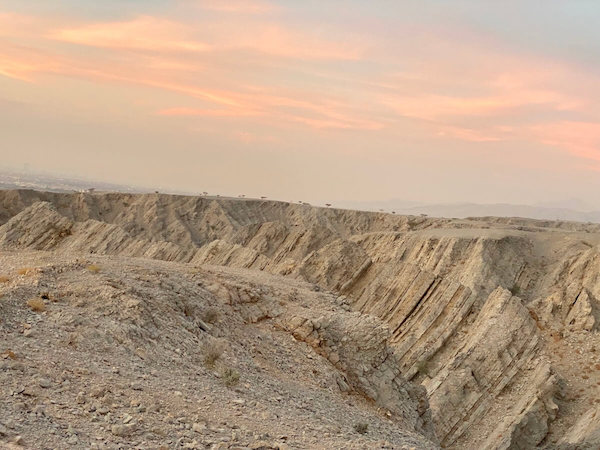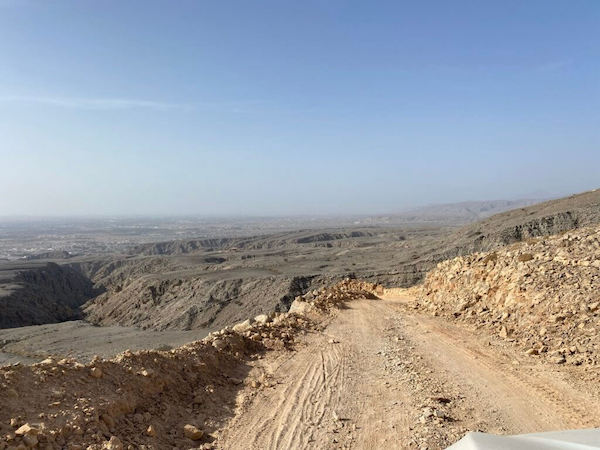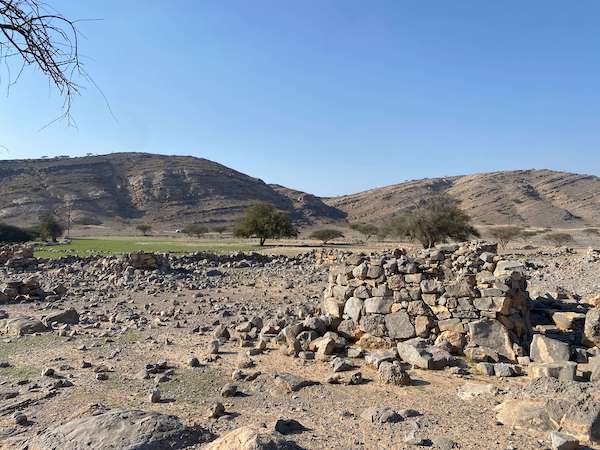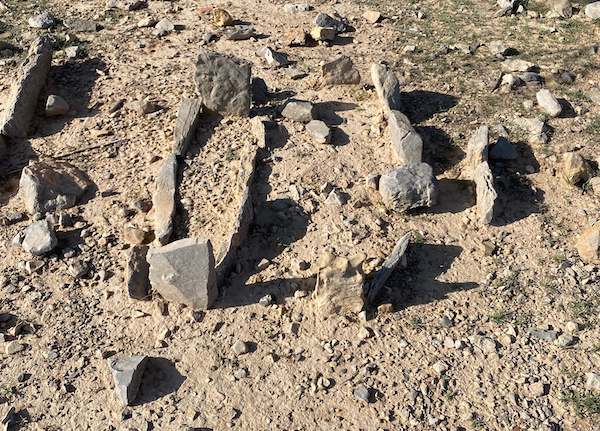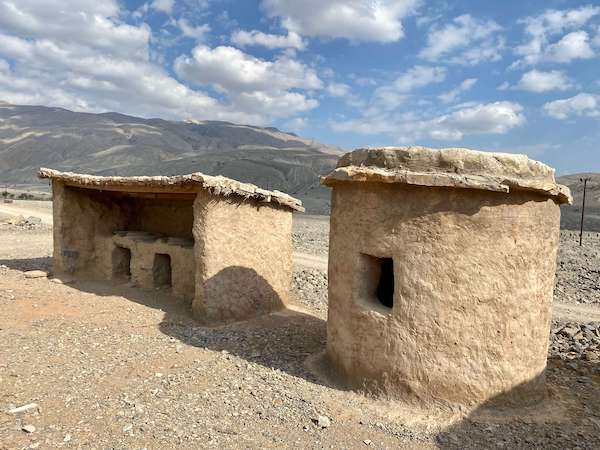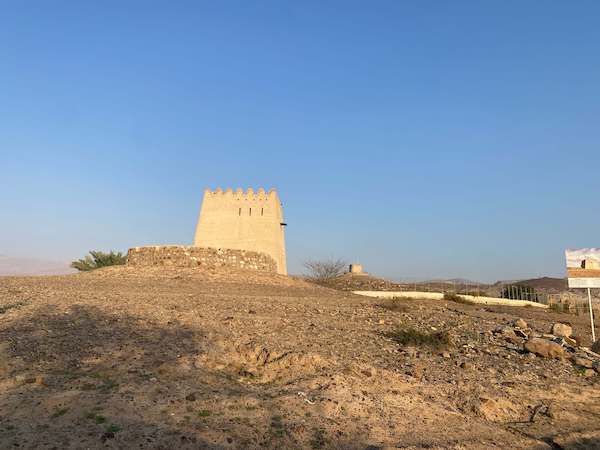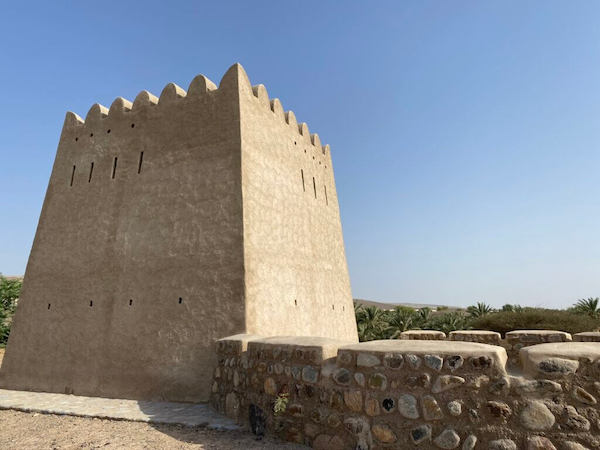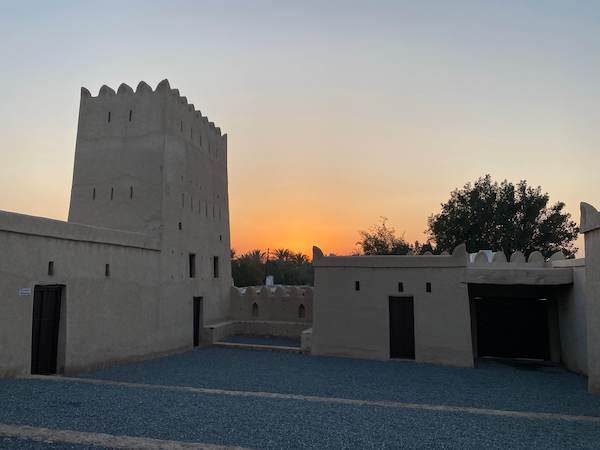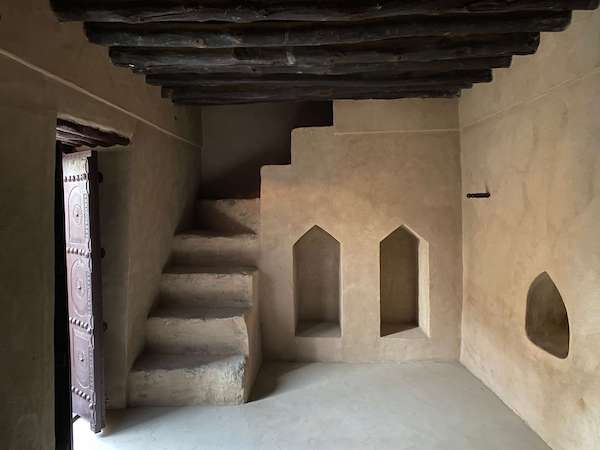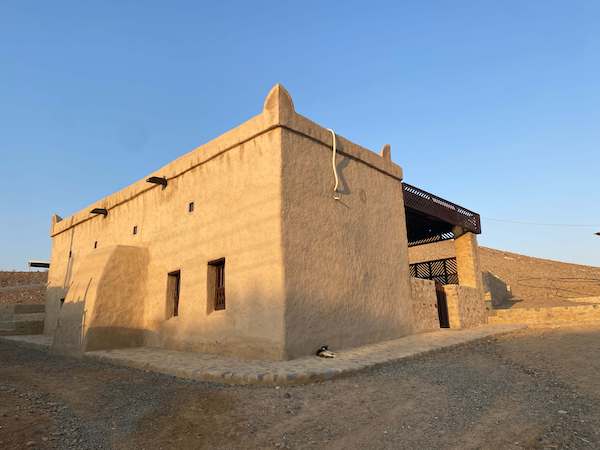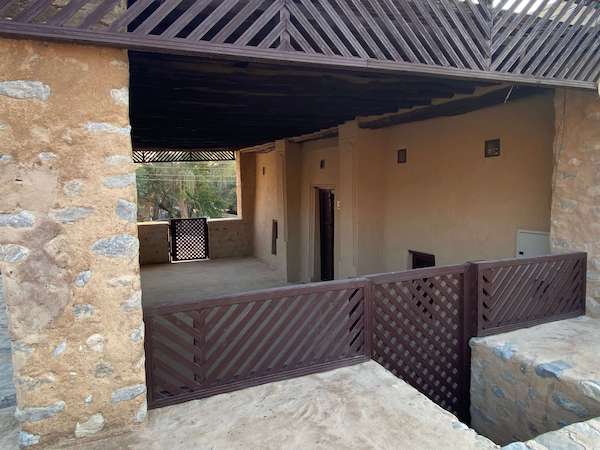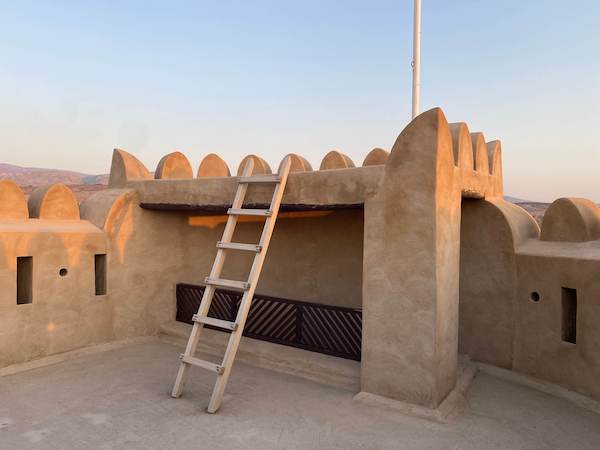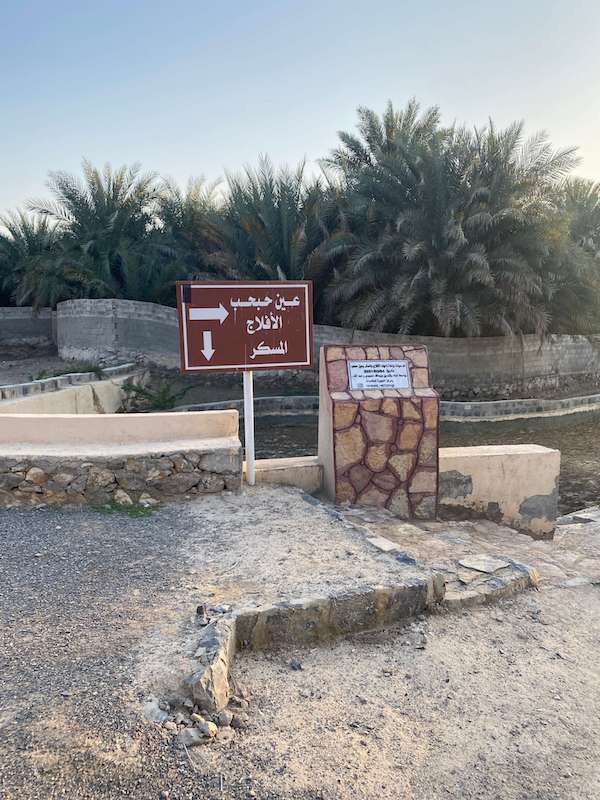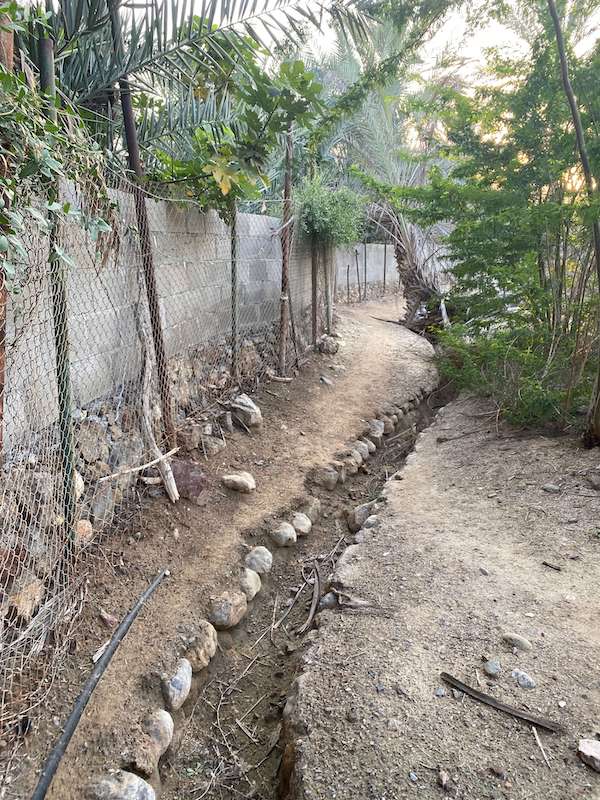Khatt, Khatt Mountain, Habhab Plateau and Habhab Village are all in the same area and you can discover more on all of these sites below.
Follow my tour around Khatt, off-road drive up Jebel Khatt enjoying stunning views of diverse landcapes, on to Habhab Plateau and beyond before coming back down the mountain. Then we round it off with a brief tour around the quiet, rustic village of Habhab.
This post was first published on June 2021, updated on 24 Feb 2024 and site last visited 23 Feb 2024
Khatt, Ras Al Khaimah
Khatt has been well-known for many years for its hot springs and a hotel and spa providing some treatments are built next to them. The pools can be accessed through the hotel for a charge of around AED 50. Update 2/24: The springs are currently closed. The hotel seems also temporarily closed.
The village itself is believed to have been inhabited over a few thousand years with evidence being found from different eras including the Stone Age, Umm al Nar and Wadi Suq (Bronze Age periods).
Burj al Naqbi, the tower which still stands in the village, was built in 1880. The Naqbis were one of the main tribes settling in Khatt.
Nearby are also mud watchtowers.
Jebel Khatt (Khatt Mountain)
Going up the mountain behind Khatt village feels a bit like going on a trip to the moon at some parts when you see the craters and deep gulleys with smooth plateaus at the top.

The drive up Jebel Khatt starts just before the Golden Tulip hotel and really needs a 4WD/AWD although I’ve seen a sedan coming down. Whilst some parts of the road are smooth and fairly flat, most parts are rocky and some steep with tight bends.
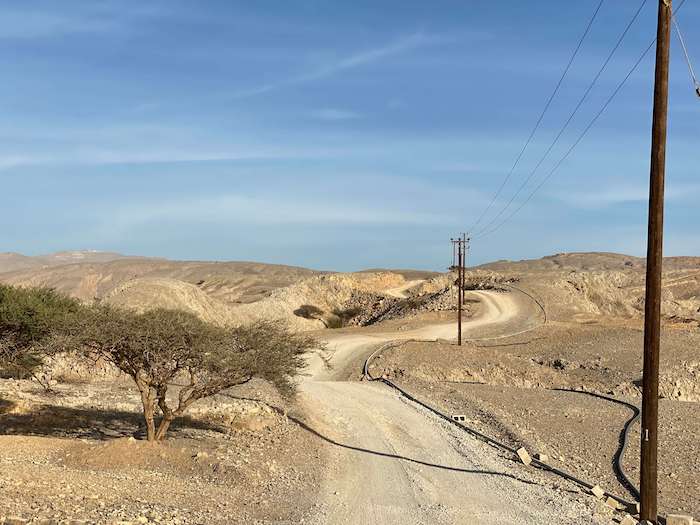
The road used to be mostly one-way with no room to pass but improvements have been made in that respect. It’s might be better to avoid in or after wet weather as it could be dangerous and slippy.
You can see a couple of farms and houses in the distance on that and the view over Khatt and interesting rock formations. Look out along the way for old villages on plateaus on the top of flat mountains in the lower part.
On Wikiloc, you can find an off-road trail I recorded in reverse back in 2021, which should help you find the starting point. Otherwise, put in Khatt Springs in Google Maps and shortly before the hotel, look on the map for the road.
It’s a narrow road between a house and another house under construction. Sometimes they close the road, so have a plan B ready.
Habhab Plateau (aka Khatt Plateau)
Once you get to the top of that part of the mountain, you can continue down the other side to Habhab Plateau. This road is very close to the border of Fujairah and Ras Al Khaimah and at times you pass from one into the other. Most is in Ras Al Khaimah but Habhab Plateau is in Fujairah.
Here you can see are ruins and ancient graves and you might find gazelles and other wildlife grazing although they’ll probably leave when you arrive.
You can carry on beyond Habhab Plateau and the village after. How far you get depends on whether the gate higher up is open. You’ll pass various old structures along the way.
There are also hiking trails crossing this Habhab Plateau, one goes to Baqeel Village. You can find them on Wikiloc. They’re mostly advanced trails so it’s recommended to go with a certified company. You can easily just have a nice walk around the plateau and along the paths though, which is what we do.
From the peak there is also another route to the left you can go back and come out beyond the hotel although it seems it is not always open.
Habhab Village
Standing proudly at the entrance of the old Habhab neighbourhood, Habhab Castle, built by the Emir of Habhab, Rashid bin Abdullah Al-Hamoudi, marks the historical importance of the village.
Its strategic location served as the first line of defence, safeguarding the residents and their livelihoods. The castle, also known as Al Bre, along with the watchtower, or Almurabah, was part of a larger defensive and residential complex that included the old village of Habhab.
The recently restored buildings in the village provide a window into its past. They include the house of Sheikh Rashid bin Abdullah bin Ali Al-Hamoudi, prince of the region, Habhab Old Mosque and old houses.
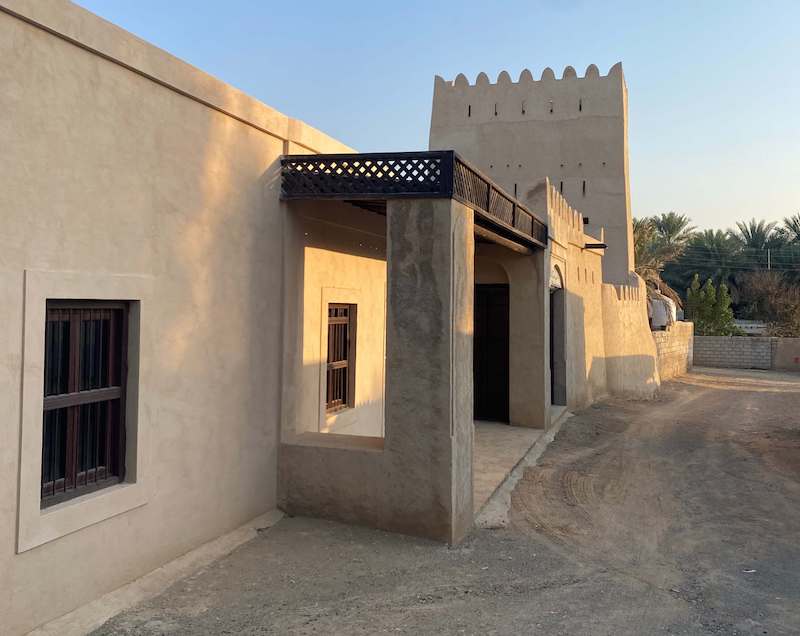
Built around 300 years ago, the Habhab Archaeological Mosque and Habhab Fort are proud reminders to the local people of the region’s history and their heritage.
Climb up the the steps to Habhab Castle for a view over Habhab, Khatt and the mountains, and over to the Arabian Gulf and Ras Al Khaimah. Look out for archaeological sites on your way up.
Nearby are the spring and the aflaj, water channels for irrigation and the meskar, a water pool for the irrigation system. These were also restored in 2021 by the local people, the descendants of Rashid bin Abdullah Al-Hamoudi and Fujairah Adventures.
While the forts protected the area, the farms and aflaj provided food and a source of livelihood for the residents. As you wander through the farms following the aflaj, you’ll see palms, mango trees, sidr and other fruit trees and vegetables growing.
Habhab and other similar locations are lovely spots to visit but please always keep the following in mind:
✅ Respect local culture and the culture of farm workers
✅ Dress modestly
✅ Treat the place and buildings respectfully
✅ Don’t enter farms unless invited
✅ Don’t leave rubbish/trash or make places dirty with food, drink, etc.
✅ Keep the narrow roads clear by parking near the hill fort
Take me to the map
What else to see nearby in Ras Al Khaimah
- Jebel Jais
- Corniche Al Qawasim
- Rak Nature’s Treasures
- Jazeera Al Hamra Old Village
- Al Rams
- Wadi Ghalila
- Shamil
- Wadi Shaam
- RAK Nature’s Treasures
- RAK Beaches
If you liked this post, you might also like Al Hayl Fort and Al Bithna Fort and Nature Trail.
- Follow on Instagram or Facebook for regular photos, tips and snippets of cultural and historical information too.
- Sign up for the Glimpses of the UAE Newsletter
- Take me to the Glimpses of the UAE Map to find nearby locations and plan my trip.
- See some of my hiking trails, walks and off-road trips on Wikiloc.
- To see my Oman trips, visit In Scotterati Footsteps.
